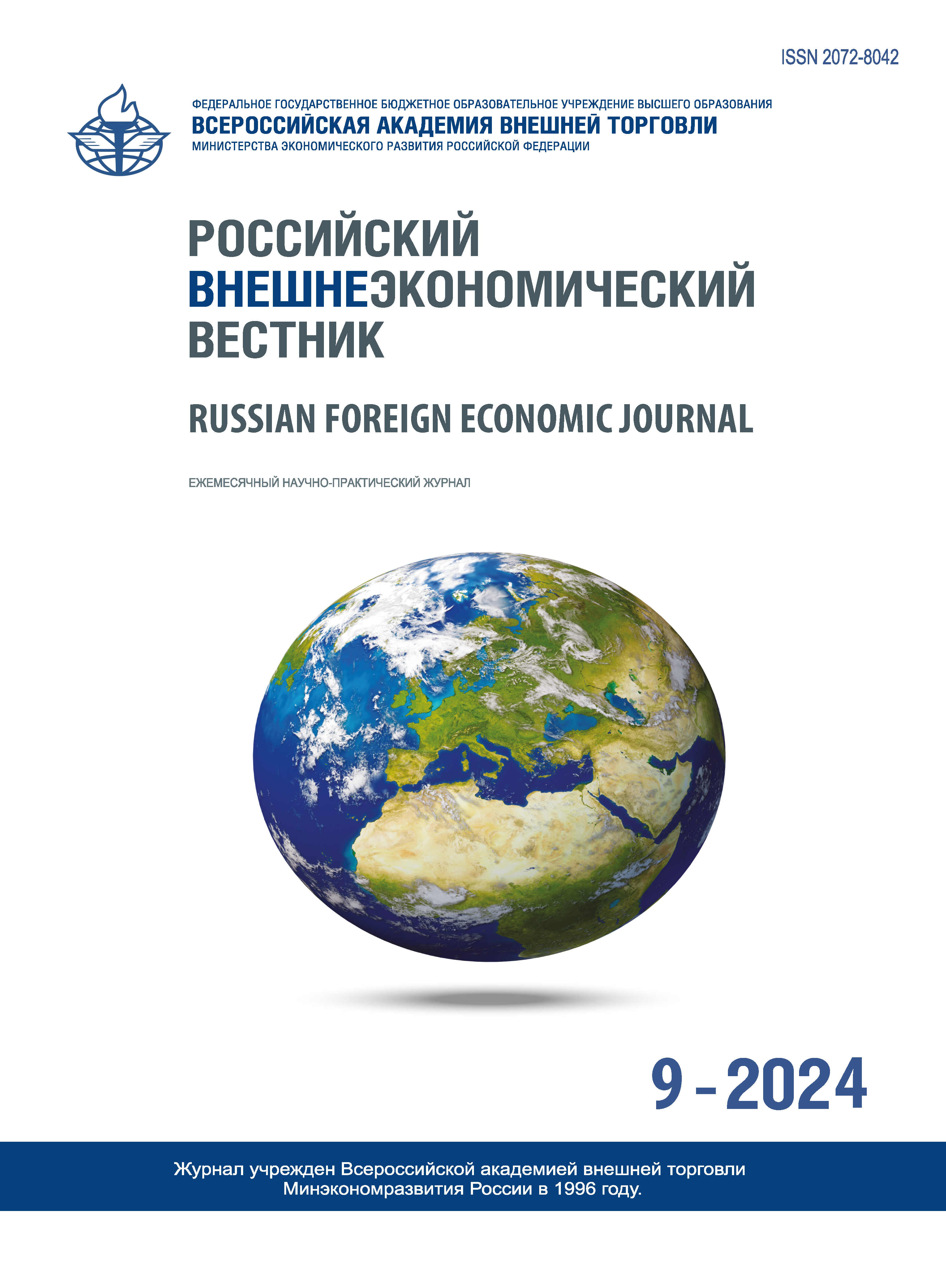The impact of government subsidies for R&D on participation in GVCs
DOI:
https://doi.org/10.24412/2072-8042-2024-9-90-97Keywords:
global value chains, GVCs, R&D, R&D subsidies, GVCs forward links, GVCs backward links, world trade, value added trade.Abstract
The global economy today is characterized by globalization and rapid technological development, with 80% of world trade occurring through global value chains (GVCs). Participation in the GVCs requires firms to innovate, which becomes a key element of their competitiveness. The development and implementation of innovations can take place both within the framework of cooperation between companies, universities and research centers, and firms independently if there is sufficient government subsidy for R&D. Such subsidies promote integration into the GVCs and can lead to repositioning to more profitable chain links. The article highlights the significant impact of government subsidies for R&D on participation in global value chains, as a result of easing restrictions on corporate financing. To improve their positions in the GVCs, firms should modernize production and carry out research activities, state subsidies for which can significantly expand the boundaries of private investment in R&D.
Downloads
Published
Versions
- 2024-12-17 (4)
- 2024-11-12 (3)
- 2024-11-02 (2)
- 2024-10-10 (1)
How to Cite
Issue
Section
License
This work is licensed under CC BY-NC 4.0





